 Essay Writing Web
Essay Writing Web
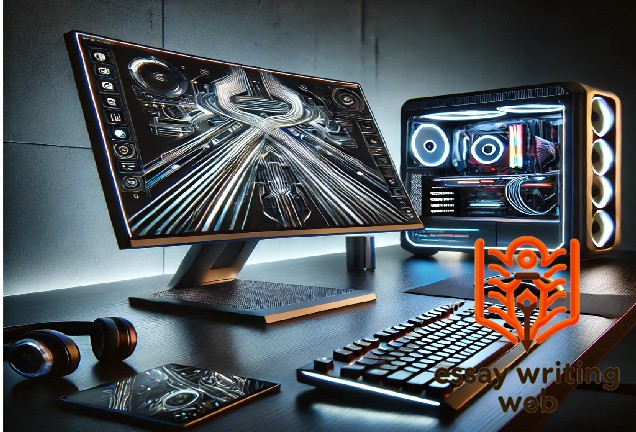
 29-08-2024
29-08-2024
 Essay Writing Web
Essay Writing Web
In the digital age, the computer has emerged as one of the most transformative inventions in human history. From its humble beginnings as mechanical devices designed for basic calculations, computers have evolved into sophisticated machines that drive nearly every aspect of modern life. Their integration into daily routines—from the workplace to personal entertainment—has reshaped how we interact with the world, approach problem-solving, and execute tasks. This essay explores the multifaceted role of computers, examining their historical development, diverse applications, and the profound impact they have had on society. By delving into these areas, we can appreciate not only the technological advancements that have brought us to this point but also the continuing evolution that promises to further revolutionize our lives.
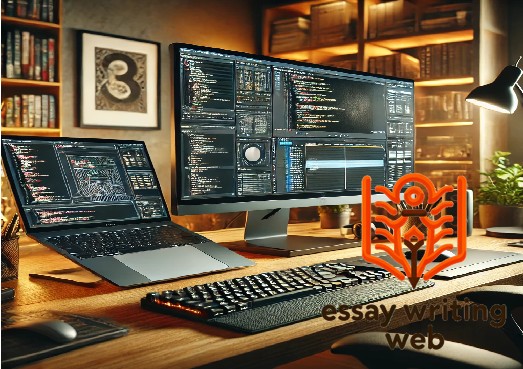
In today's interconnected world, computers have become indispensable tools that influence virtually every aspect of our daily lives. Their remarkable evolution from rudimentary calculating devices to powerful, multifunctional machines underscores their profound impact on modern society. At their core, computers are electronic devices capable of processing and storing vast amounts of information, executing complex algorithms, and performing a multitude of tasks that range from simple arithmetic to intricate simulations.
The concept of computing dates back centuries, with early devices such as the abacus and mechanical calculators laying the groundwork for future advancements. However, it was in the mid-20th century's that computers began to take shape as we know them today's. The advent of the electronic computer marked a significant leap, introducing components such as transistors and integrated circuits that greatly enhanced computational speed and reliability.
Modern computers are categorized into several types based on their size, application, and functionality. Personal computers, including desktops and laptops, serve as versatile tools for everyday tasks such as word processing, internet browsing, and multimedia consumption. Meanwhile, more specialized systems like servers handle extensive data processing and storage for businesses and institutions. At the other end of the spectrum, supercomputers, with their immense processing power, tackle complex scientific calculations and simulations that are beyond the reach of conventional machines.
The architecture of a computer is comprised of both hardware and software components. Hardware refers to the physical parts of a computer, such as the central processing unit (CPU), memory modules, and storage drives. Software, on the other hand, encompasses the programs and operating systems that drive the hardware, enabling users to perform a wide array of tasks.
The versatility of computers is further exemplified by their applications across various fields. In education, they facilitate learning through interactive tools and online resources. In business, they enhance productivity , streamline operations, and enable global communication. In healthcare, computers support diagnostic procedures, patient management, and medical research. Moreover, computers play a crucial role in entertainment, providing platforms for gaming, streaming, and digital content creation.
As technology continues to advance, the future of computers promises even greater innovations. Emerging trends such as artificial intelligence, machine learning, and quantum computing are poised to revolutionize how we interact with technology and solve complex problems. The ongoing development in these areas indicates that the role of computers will only become more integral and transformative in shaping the future of our world.
In conclusion, computers have transcended their origins as mere calculating machines to become central to modern existence. Their evolution and multifaceted applications illustrate their significance in advancing technology and improving human lives. As we move forward, the continued advancement of computer technology will undoubtedly lead to new possibilities and innovations, further cementing their role as pivotal tools in our increasingly digital age.
In today’s rapidly evolving world, computers have become indispensable to virtually every facet of human existence. Their profound impact extends beyond mere convenience, shaping how we work, learn, communicate, and entertain ourselves. This essay explores the multifaceted significance of computers in modern life, highlighting their transformative influence on various sectors and the fundamental role they play in shaping our daily experiences.
First and foremost, computers are pivotal in the realm of work and productivity. The efficiency and speed with which tasks are performed have dramatically increased due to advancements in computer technology. From complex data analysis and project management to routine office tasks and remote work, computers facilitate a range of activities that streamline business operations and enhance productivity. Software applications, such as spreadsheets and project management tools, have become essential for organizing and analyzing information, while digital communication platforms have redefined how teams collaborate and share ideas across the globe.
In education, computers have revolutionized the learning process, making knowledge more accessible than ever before. Educational software and online resources provide students with interactive and engaging learning experiences that were previously unimaginable. The advent of e-learning platforms and virtual classrooms has expanded educational opportunities, allowing learners to access high-quality instruction from anywhere in the world. This shift has democratized education, breaking down geographical and financial barriers and enabling lifelong learning for people of all ages.
Computers have also transformed the way we communicate and connect with others. Social media platforms, email, and instant messaging have redefined interpersonal interactions, making it easier to stay in touch with friends and family, collaborate with colleagues, and participate in global discussions. These digital communication tools have fostered a sense of community and connectivity, bridging distances and bringing people closer together in ways that were once thought impossible.
Entertainment and media have undergone a significant evolution due to computers. Streaming services, video games, and digital content creation are just a few examples of how computers have reshaped the entertainment landscape. The ability to access a vast array of multimedia content at our fingertips has changed how we consume information and engage with entertainment. Moreover, the creative possibilities offered by computer technology have empowered individuals to produce and share their own content, democratizing the media industry and allowing for a more diverse range of voices and perspectives.
Despite their many benefits, computers also present challenges, such as issues related to privacy, cybersecurity, and digital divide. The proliferation of personal data and the potential for cyber threats underscore the need for robust security measures and ethical practices in handling information. Additionally, the digital divide highlights the disparity in access to technology, emphasizing the importance of ensuring equitable opportunities for all individuals to benefit from technological advancements.
In conclusion, computers are integral to modern life, influencing various aspects of our daily routines and shaping the future of society. Their impact on work, education, communication, and entertainment underscores their significance and demonstrates their transformative power. As technology continues to evolve, the role of computers will undoubtedly expand, presenting new opportunities and challenges that will shape our world for years to come.
The history of computers is a fascinating journey from primitive calculation tools to sophisticated digital systems that shape our world today. Early computing devices, such as the abacus, laid the groundwork for more advanced mechanisms. In the 19th century, Charles Babbage conceptualized the Analytical Engine, an early mechanical computer that incorporated fundamental ideas of modern computing, such as a stored program and sequential control.
The 20th century marked a significant leap with the development of electronic computers. The ENIAC, introduced in 1945, was one of the first general-purpose electronic computers, capable of performing a wide range of calculations. The subsequent invention of the transistor in the late 1940s revolutionized computing by making computers smaller, more reliable, and more affordable. This was further enhanced by the introduction of integrated circuits in the 1960s, which allowed for even greater miniaturization and efficiency.
The 1970s and 1980s saw the rise of personal computers, making computing technology accessible to the general public. Companies like Apple and IBM played pivotal roles in this revolution. The proliferation of the internet in the 1990s and 2000s further transformed computers into powerful tools for communication and information exchange. Today, ongoing advancements in fields such as artificial intelligence and quantum computing promise to drive future innovations, continuing the remarkable evolution of computer technology.
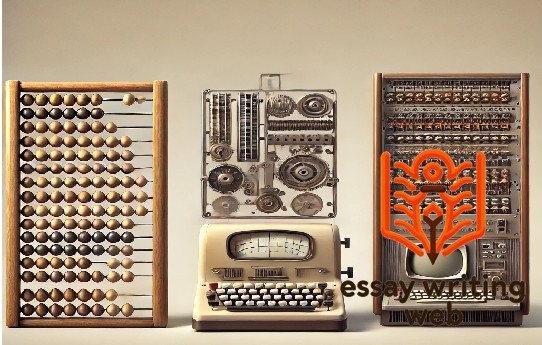
The evolution of computing began with rudimentary tools designed to assist with arithmetic and record-keeping. Among the earliest of these were the abacus and various mechanical calculating devices, which set the stage for more advanced technological developments. The abacus, used since ancient times in civilizations such as Mesopotamia and China, allowed users to perform basic arithmetic operations through the manipulation of beads on rods or wires.
The 17th century saw the advent of mechanical calculators, such as Blaise Pascal’s Pascaline and Gottfried Wilhelm Leibniz’s Step Reckoner. Pascal's invention, introduced in 1642, was a mechanical device capable of performing addition and subtraction through a series of gears and wheels. Leibniz’s Step Reckoner, developed in the late 1670s, expanded this functionality to include multiplication and division.
The 19th century introduced more complex concepts with Charles Babbage's designs for the Analytical Engine. Although never completed, Babbage’s design featured elements fundamental to modern computing, such as a programmable control unit and memory. Ada Lovelace, a contemporary of Babbage, recognized the machine’s potential and wrote detailed notes on its use, earning her the title of the first computer programmer.
These early devices laid the foundational principles of computing, setting the stage for the rapid advancements that followed in the 20th century. Their innovations in mechanical computation and programming concepts paved the way for the sophisticated electronic computers that transformed the modern world.

The development of modern computers represents a remarkable journey from early mechanical devices to powerful digital systems. This evolution began in the 1940s with the advent of electronic computers like the ENIAC (Electronic Numerical Integrator and Computer), which used vacuum tubes to perform complex calculations. While revolutionary, vacuum tubes were bulky and unreliable, leading to the search for more efficient alternatives.
The 1950s introduced transistors, a breakthrough that allowed computers to become smaller, more reliable, and energy-efficient. This era marked the emergence of second-generation computers, which featured enhanced performance and reduced size. The 1960s further accelerated progress with the development of integrated circuits, leading to the third generation of computers. Integrated circuits enabled even greater miniaturization and performance improvements, setting the stage for personal computing.
The 1970s and 1980s saw the rise of microprocessors, which led to the proliferation of personal computers. Innovations such as the Intel 4004 microprocessor and the Apple II made computing accessible to individuals and small businesses. The 1990s brought the internet era, transforming computers into essential tools for global communication and commerce.
Today, advancements in artificial intelligence, quantum computing, and cloud technology continue to push the boundaries of what computers can achieve, promising new possibilities and reshaping the digital landscape.
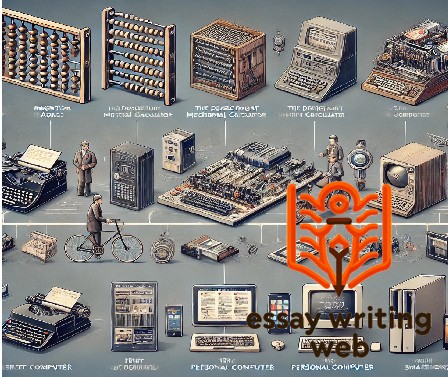
The development of computing technology is marked by several pivotal milestones that have significantly shaped its evolution. One of the earliest milestones was the creation of the abacus in ancient civilizations, which served as a fundamental tool for arithmetic and laid the groundwork for future computational devices.
A major advancement came in the 17th century with Blaise Pascal’s invention of the Pascaline, a mechanical calculator designed to perform addition and subtraction. This innovation was followed by Gottfried Wilhelm Leibniz’s Step Reckoner, which extended the Pascaline’s capabilities to include multiplication and division.
The 19th century introduced Charles Babbage’s Analytical Engine, a groundbreaking concept that featured elements crucial to modern computing, such as programmability and a central processing unit. Although the machine was never completed, its design significantly influenced future developments.
The 1970s and 1980s saw the emergence of personal computers, with innovations like the Intel 4004 microprocessor and the Apple II making computing accessible to individuals. The 1990s brought the internet era, transforming computers into global communication tools. Today, advancements in artificial intelligence and quantum computing continue to drive the evolution of technology, promising new capabilities and applications.

Computers come in various forms, each designed to meet specific needs and perform distinct functions. Understanding these types helps in selecting the appropriate system for different applications, from personal use to large-scale enterprise operations.
Personal Computers (PCs) are perhaps the most familiar type, including both desktops and laptops. Desktops are stationary machines with separate components such as the monitor, CPU, keyboard, and mouse. They are commonly used for everyday tasks like word processing, gaming, and web browsing . Laptops, on the other hand, are portable and integrate the monitor, keyboard, and CPU into a single unit, making them ideal for mobile use and remote work.
Servers are powerful computers designed to manage and provide resources to other computers over a networks. They handle tasks such as hosting websites, managing email, and storing large volumes of data. Servers are typically more robust and have higher performance specifications compared to personal computers, as they need to handle multiple simultaneous connections and heavy workloads.
Supercomputers represent the pinnacle of computational power and are used for complex simulations and data analysis in fields such as climate research, quantum physics, and space exploration. These machines consist of thousands of interconnected processors that work in parallel to perform calculations at incredibly high speeds.
Embedded Computers are specialized systems integrated into other devices to perform specific functions. Examples include microcontrollers in appliances like washing machines, or systems in cars that manage engine performance. These computers are designed for reliability and efficiency in their designated tasks, often operating with minimal user interaction.
Workstations are high-performance computers used for tasks requiring substantial processing power, such as graphic design, video editing, and scientific simulations. They offer greater processing capabilities and higher resolution displays compared to standard personal computers.
Each type of computer is tailored to different needs and applications, reflecting the diverse ways in which computing technology supports and enhances various aspects of modern life. Understanding these types helps in selecting the right computer for personal, business, or specialized tasks, ensuring optimal performance and efficiency.

Personal computers (PCs) are versatile devices designed for individual use, and they have become integral to modern life. These computers come in various forms, each catering to different needs and preferences, but all share a common goal: to provide users with a powerful tool for personal and professional tasks.
Desktops are the traditional form of personal computers, typically comprising separate components such as the monitor, CPU, keyboard, and mouse. They are favored for their stability, performance, and expandability. Desktops are often used in home and office settings where space is not a constraint. Their larger size allows for more powerful hardware and easier upgrades, making them suitable for tasks that demand substantial processing power, such as gaming, video editing, and software development.
Laptops represent a more portable alternative, integrating all essential components into a single unit. Their compact design allows for mobility, enabling users to work or access information while on the move. Modern laptops offer impressive performance and battery life, bridging the gap between convenience and functionality. They are ideal for students, professionals, and anyone who needs a computer that can easily be transported between locations.
All-in-One PCs combine the monitor and CPU into a single, sleek unit. This design eliminates the need for a separate tower and reduces clutter, making them an attractive choice for those with limited desk space. While they might offer fewer upgrade options compared to traditional desktops, their streamlined appearance and ease of setup appeal to users seeking a clean, modern look.
Personal computers have evolved significantly since their inception, with advancements in hardware and software continuously enhancing their capabilities. Modern PCs support a myriad of applications, from productivity software and creative tools to entertainment and communication platforms. They are equipped with high-speed processors, ample storage, and advanced graphics, making them adaptable to various user needs.

Laptops and tablets represent two of the most versatile and portable types of personal computing devices available today. Although both serve similar purposes—providing access to information, productivity tools, and entertainment—they differ significantly in design, functionality, and user experience.
Laptops are compact computers designed to offer the full functionality of a desktop in a portable format. They typically feature a clamshell design with a hinged screen and a physical keyboard, which allows for comfortable typing and extensive use of applications. Laptops come in various sizes and configurations, catering to different needs, from lightweight ultrabooks ideal for travel to high-performance gaming laptops designed for intensive tasks. Their built-in battery and robust hardware enable users to perform a wide range of activities, including word processing, data analysis, and multimedia creation. Laptops also generally offer a variety of connectivity options, such as USB ports and HDMI outputs, making them suitable for connecting to external devices and peripherals.
Tablets, on the other hand, are characterized by their sleek, touchscreen-only interface. They are designed for ease of use and portability, making them ideal for casual computing tasks such as browsing the web, reading e-books, and watching videos. Tablets often operate on mobile operating systems like iOS or Android, which are optimized for touch interaction and a wide array of applications available through app stores. The lack of a physical keyboard can be mitigated by using on-screen keyboards or detachable keyboard accessories, though these may not match the typing comfort of a traditional laptop. Tablets are also known for their long battery life and lightweight design, making them convenient for on-the-go use.
Servers are integral components of the modern digital ecosystem, serving as the backbone of various networks and online services. Unlike personal computers, which are designed for individual use, servers are specialized machines optimized for managing, storing, and distributing resources and information to multiple users simultaneously. Their role in ensuring seamless data access, application functionality, and network services makes them indispensable in both business and personal contexts.
These servers are responsible for storing and managing files within a network. They facilitate access to shared documents, ensure data consistency, and provide backup solutions, which are crucial for collaborative work and data recovery.
They handle requests from users’ web browsers, delivering web pages and content over the internet. Prominent examples include Apache and Nginx, which manage significant portions of global web traffic.
These servers manage databases, providing efficient data retrieval, storage, and manipulation. They support applications that require complex queries and transactions, with examples including MySQL and Oracle, which are widely used in various industries.
They manage email accounts, process incoming and outgoing mail, and ensure secure communication, making them essential for business and personal correspondence.
Application servers run software applications and services, facilitating user interaction with complex systems over a network. They are used in enterprise environments to support business operations and provide access to critical applications.
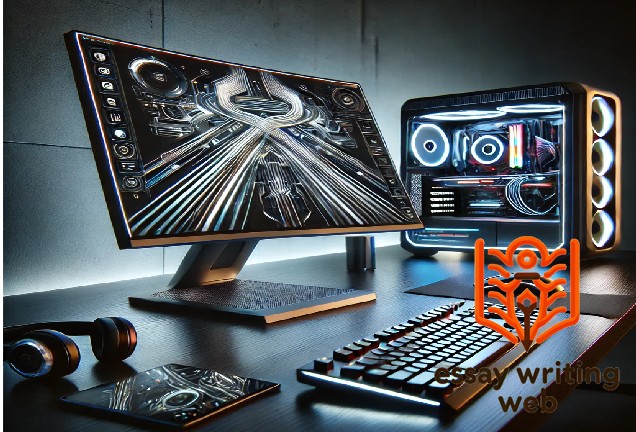
Computer software is the lifeblood of modern computing, orchestrating the functionality and utility of computer hardware through a complex array of programs and applications. Unlike physical hardware, which consists of tangible components such as processors, memory, and storage devices, software comprises intangible code and instructions that direct hardware operations. This essential element of computing acts as a bridge between the user and the machine, enabling users to perform a myriad of tasks, from simple calculations to complex data analyses.
At its core, computer software is designed to manage hardware resources and provide a platform for running various applications. It encompasses a broad spectrum of types, including system software, which includes operating systems and utility programs, and application software, which serves specific user needs such as productivity, creativity, and entertainment. Additionally, development software supports the creation and maintenance of other software, while firmware provides low-level control embedded in hardware devices.
The evolution of computer software has been marked by rapid advancements, reflecting changes in technology and user requirements. From the early days of simple, text-based interfaces to the sophisticated graphical user interfaces (GUIs) and web-based applications of today, software has continually adapted to enhance functionality and improve user experience. As technology continues to evolve, software remains a critical component in driving innovation and shaping the future of computing.
Computer software is the lifeblood of modern computing, orchestrating the functionality and utility of computer hardware through a complex array of programs and applications. Unlike physical hardware, which consists of tangible components such as processors, memory, and storage devices, software comprises intangible code and instructions that direct hardware operations. This essential element of computing acts as a bridge between the user and the machine, enabling users to perform a myriad of tasks, from simple calculations to complex data analyses.
At its core, computer software is designed to manage hardware resources and provide a platform for running various applications. It encompasses a broad spectrum of types, including system software, which includes operating systems and utility programs, and application software, which serves specific user needs such as productivity, creativity, and entertainment. Additionally, development software supports the creation and maintenance of other software, while firmware provides low-level control embedded in hardware devices.
The evolution of computer software has been marked by rapid advancements, reflecting changes in technology and user requirements. From the early days of simple, text-based interfaces to the sophisticated graphical user interfaces (GUIs) and web-based applications of today, software has continually adapted to enhance functionality and improve user experience. As technology continues to evolve, software remains a critical component in driving innovation and shaping the future of computing.

Computer hardware forms the physical foundation of computing systems, encompassing the tangible components that work in unison to execute tasks and process data. Unlike software, which consists of intangible code and instructions, hardware includes the actual devices and circuits that make up a computer system. These components range from fundamental elements like the central processing unit (CPU) and memory modules to peripheral devices such as keyboards and monitors.
At its core, computer hardware includes several key elements. . Memory components, such as random access memory (RAM), provide temporary storage for data that is actively being used. Storage devices like hard disk drives (HDDs) and solid-state drives (SSDs) offer long-term data retention. Additionally, input and output devices facilitate user interaction with the system, while networking components enable connectivity and communication with other devices.
The evolution of computer hardware has been driven by the quest for increased performance, efficiency, and miniaturization. From the early days of massive, room-sized computers to today's sleek, high-performance machines, advancements in hardware technology have continually expanded the capabilities and applications of computing systems. Understanding computer hardware is essential for appreciating how these devices function, how they are assembled, and how they interact with software to deliver a seamless computing experience.